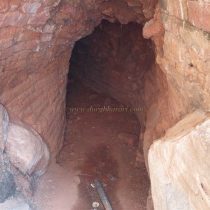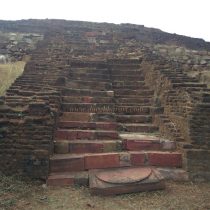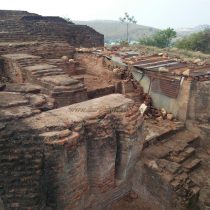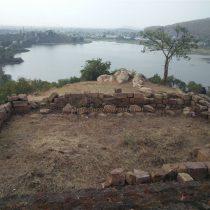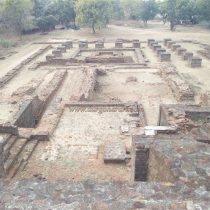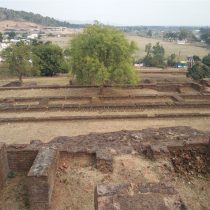MANSAR TEMPLE
TYPE : ANCIENT SHIVMANDIR
DISTRICT : NAGPUR
In Maharashtra, the practice of building a temple on a hill or pinnacle has been going on for a long time. An excavation on Hidimba hill at Mansar has revealed a similar Shiv temple on the hill. On the way from Nagpur to Ramtek, on the Nagpur-Jabalpur highway, at a distance of 45 km, there is a fork leading from Mansar to Ramtek. Ramtek is 7 km from this fork. About 1 km east of Mansar village is the Hidimba hill and the newly enlightened Shivalaya. Wakataka is an ancient and famous dynasty in Maharashtra. During the Satvahana period, the present Mansar was formerly known as Pravarpur and it was an important city. In 250 AD, the Wakataka kings defeated them and brought Vidarbha under their control. Remains of many temples of this dynasty have been excavated in different parts of Vidarbha. During the Wakataka period, temples were also built with bricks along with stones.
...
During the excavation of Hidimba Hill at Mansar between 1992 and 2004, four brick temples were discovered. Due to the partial remains of the temples at Mansar, it is not possible to predict other parts of the temple, but the structure of these temples can be imagined based on temple architecture. The temples found at Mansar are in the advanced stage of architecture. According to archaeologists, one of the magnificent Shivalayas and one of the temples is from the Wakataka period and the other two temples must have existed before the Wakataka period. The sanctum sanctorum of these temples looks very beautiful these are considered to be the oldest temples from the second century. On reaching Mansar village, the Bodhisattva Nagarjuna institution has created a path going to the Hidimba hill. On the way up the hill, you can see a large natural lake at the back of the hill. As the hill is small, we reach the top of it within 10 minutes. Remains on the hill are square Buddhist stupas with brick chaityagriha. There is a small basement on the hill and it should probably be a meditation temple. There are some idols kept in a tin shelter here.
Shivalaya: The remains of this temple area on the west side of Hidimba hill. This structure is built of bricks and is divided into two parts namely sanctum sanctorum and pavilion but the foundation of this structure is built out of stone. Facing east, the temple has steps leading to the Ardhamandaps on the east side, and on the west side of the Ardhamandap are the remains of the pavilion and the sanctum sanctorum. There is a wide circumnavigation around the sanctum sanctorum and the pavilion. The upper part of the temple is made out of bricks and is decorated. The idols found in this area in 1970 are placed in the sanctum sanctorum of this temple. Archaeologists believe that the temple may have been built by Wakataka Nripati Pravarsena (I) and may have been rebuilt by his grandson Pravarsen (II) in memory of his grandfather.
The group of Shiv Temples: The second magnificent brick temple of the Wakataka period was found in the form of a quadrangle structure only, on the north-western slope of Hidimba hill. This temple is constructed in two stages. To maintain the height of the hill, the temple is built on a flat quadrangle structure with the help of a thick wall. In the first part of the temple, there are small statues on the quadrangle structure around the main temple with a corner. The ruins of some idols have been found in the northern pratimagruha, while the six pratimagruha in the west and south have different Shivlings. According to archaeologist Arvind Jamkhedkar, these temples of the Wakataka period must have belonged to the Pashupatinath denomination. At the foot of the hill is the huge brick palace of Wakataka king Pravarsena. This palace has many small and big rooms. The entire palace was surrounded by a brick wall and a moat was dug outside this wall. The water from the lake behind Hidimba hill was released into the moat. During the excavation of this palace, important seals of Raja Pravarsena and Rani Prabhavati Gupta were found. 3 hours is enough to see all the remains of Hidimba hill and temples.
© Suresh Nimbalkar








